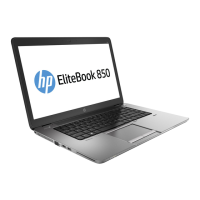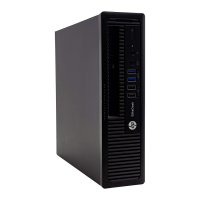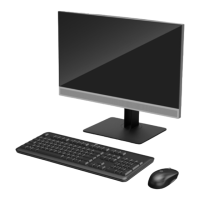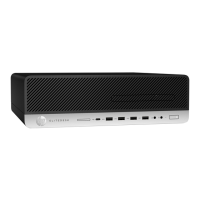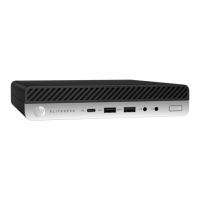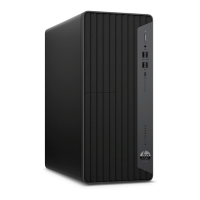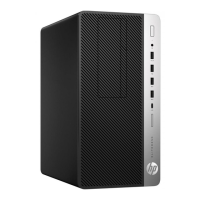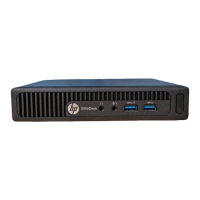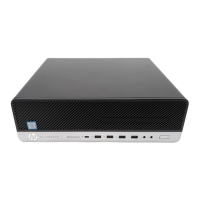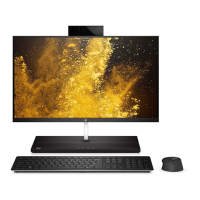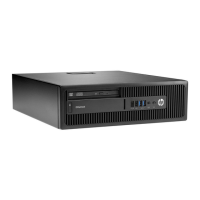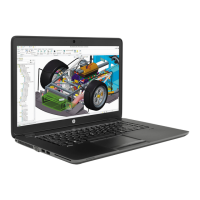
Do you have a question about the HP EliteBook 840 G2 Notebook PC and is the answer not in the manual?
| Graphics | Intel HD Graphics 5500 |
|---|---|
| Processor | Intel Core i5-5300U |
| RAM | Up to 16GB DDR3L |
| Storage | Up to 512GB SSD or 1TB HDD |
| Display | 14-inch HD (1366x768) or FHD (1920x1080) |
| Operating System | Windows 10, Windows 8.1, Windows 7 |
| Battery | 3-cell Li-ion |
Details about CPU options for the HP EliteBook and ZBook models.
Information on the chipset used in the HP EliteBook and ZBook models.
Describes graphics capabilities, including discrete and integrated options.
Specifications for different display panel options available for the models.
Details on memory module types, capacities, and configurations supported.
Lists available hard drive options for specific notebook models.
Lists available hard drive options for the ZBook workstation.
Lists available SSD options for specific notebook models.
Lists available SSD options for the ZBook workstation.
Details about audio and video components like speakers and webcams.
Information on Ethernet connectivity and wake-on-LAN features.
Specifications for wireless network adapters (WLAN, WWAN).
Information on the digital media reader slot.
Lists and describes the various ports available on the computer.
Details on keyboard features and pointing device options.
Information on power adapters and battery options.
Details on security features like cable locks and fingerprint readers.
Lists preinstalled and supported operating systems.
Information on user-replaceable parts.
Identifies external and internal display components.
Locates and describes buttons, speakers, and fingerprint reader.
Identifies and describes keyboard keys and special functions.
Explains the function of various indicator lights on the computer.
Details the TouchPad and its associated buttons and features.
Identifies components on the front of the computer.
Identifies components on the left side of the computer.
Identifies components on the right side of the computer.
Identifies components on the bottom of the computer.
Guide to finding essential identification and warranty details on the computer.
Lists and identifies the main internal components of the computer.
Details the individual parts that make up the display assembly.
Lists plastic parts and their associated part numbers.
Lists various other parts not categorized elsewhere.
Lists the necessary tools for component removal and replacement.
Important points to keep in mind during disassembly and assembly.
Precautions for handling plastic components to prevent damage.
Guidelines for handling cables and connectors to avoid damage.
Precautions for safely handling hard drives and other drives.
Procedures to prevent damage from electrostatic discharge (ESD).
Explains the risks of ESD and how to mitigate them.
Guidelines for packaging and transporting equipment safely.
Recommendations for setting up a safe workspace.
General guidelines for equipment used in handling sensitive components.
Step-by-step instructions for replacing user-serviceable parts.
Instructions for removing and replacing the service cover.
Procedures for removing and replacing the battery.
Steps to remove and replace the hard drive.
Instructions for removing and replacing the solid-state drive.
Procedures for removing and replacing the WWAN module.
Steps to remove and replace the WLAN module.
Instructions for removing and replacing memory modules.
Procedures for removing and replacing the keyboard.
Instructions for authorized personnel to replace specific computer parts.
Steps to unlock the device and disable AORM for service.
Procedures for removing and replacing the display panel.
Instructions for removing and replacing the RTC battery.
Procedures for removing and replacing the base enclosure.
Steps to remove and replace the system fan.
Instructions for removing and replacing the NFC module.
Procedures for removing and replacing the card reader board.
Details the TouchPad and its associated buttons and features.
Instructions for removing and replacing the USB/VGA connector board.
Procedures for removing and replacing the heat sink.
Instructions for removing and replacing the power button board.
Instructions for removing and replacing the fingerprint reader board.
Procedures for removing and replacing the system board.
Instructions for removing and replacing the speaker assembly.
Procedures for removing the entire display assembly.
Guide to navigating and using the BIOS settings.
Steps to enter the Computer Setup utility.
How to move through menus and make selections in Setup.
Procedures to reset BIOS settings to factory defaults.
Instructions for updating the system's BIOS.
How to check the current BIOS version installed.
Steps to download the latest BIOS update from HP.
Information on managing multiple boot devices.
Explains how the system selects boot devices.
Options for configuring boot behavior.
How to change the boot order in BIOS.
Method to select boot device at startup using F9.
Configuring the system to prompt for boot location.
Guide to running hardware diagnostic tests.
Instructions for creating a bootable diagnostic USB drive.
Information on the HP Sure Start BIOS protection feature.
Detailed technical specifications including dimensions, weight, and power.
Strategies and importance of regular data backups.
Steps and tools for recovering the system after failure.
How to use Windows built-in tools for recovery.
Procedures for using the F11 key for system recovery.
Instructions for performing a clean OS install using external media.
Options for refreshing or resetting the Windows system.
How to use HP Software Setup for driver reinstallation.
Details on where personal data might reside in non-volatile memory.
General requirements for power cord sets applicable globally.
Specific power cord set requirements based on country/region.
